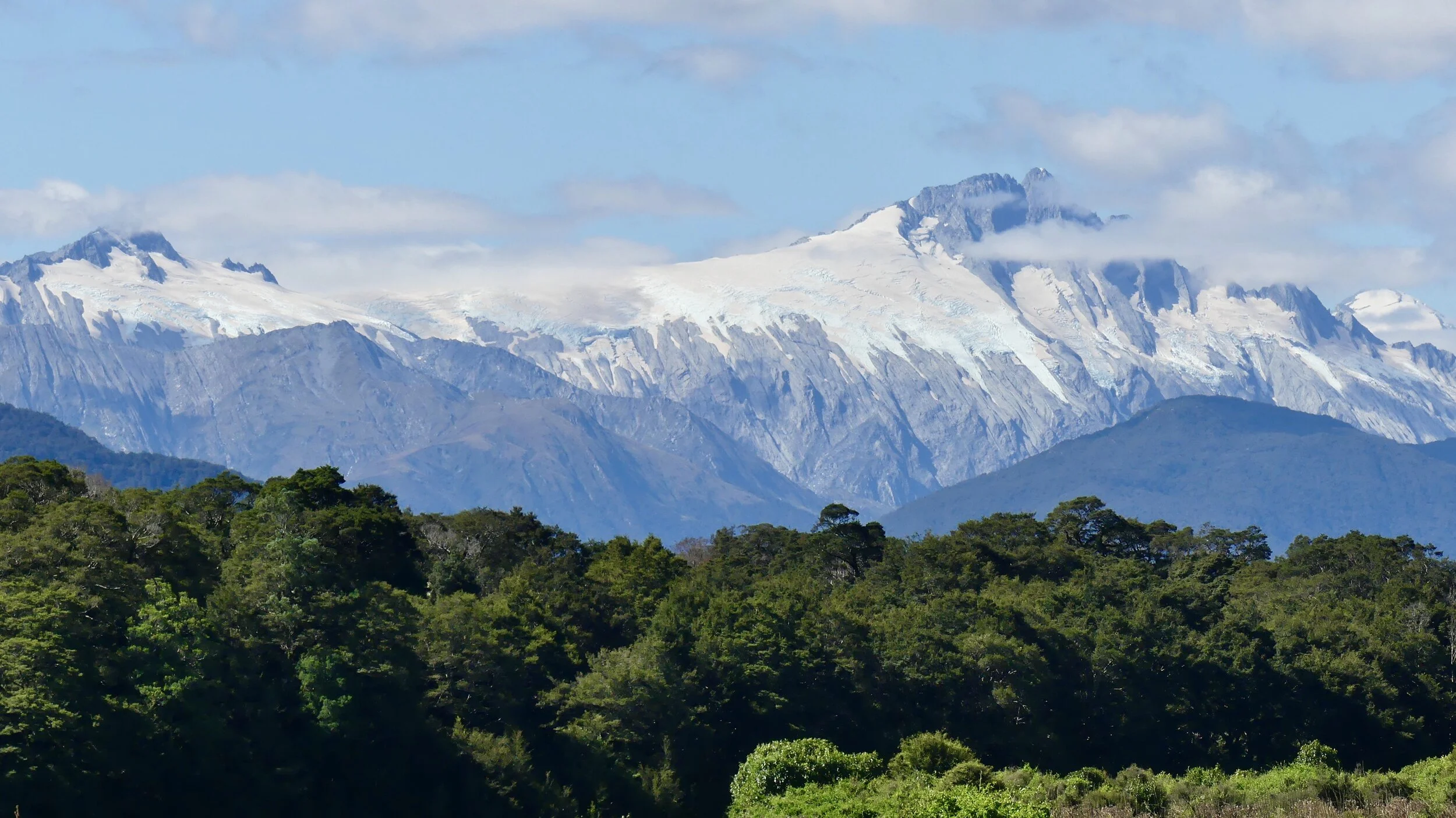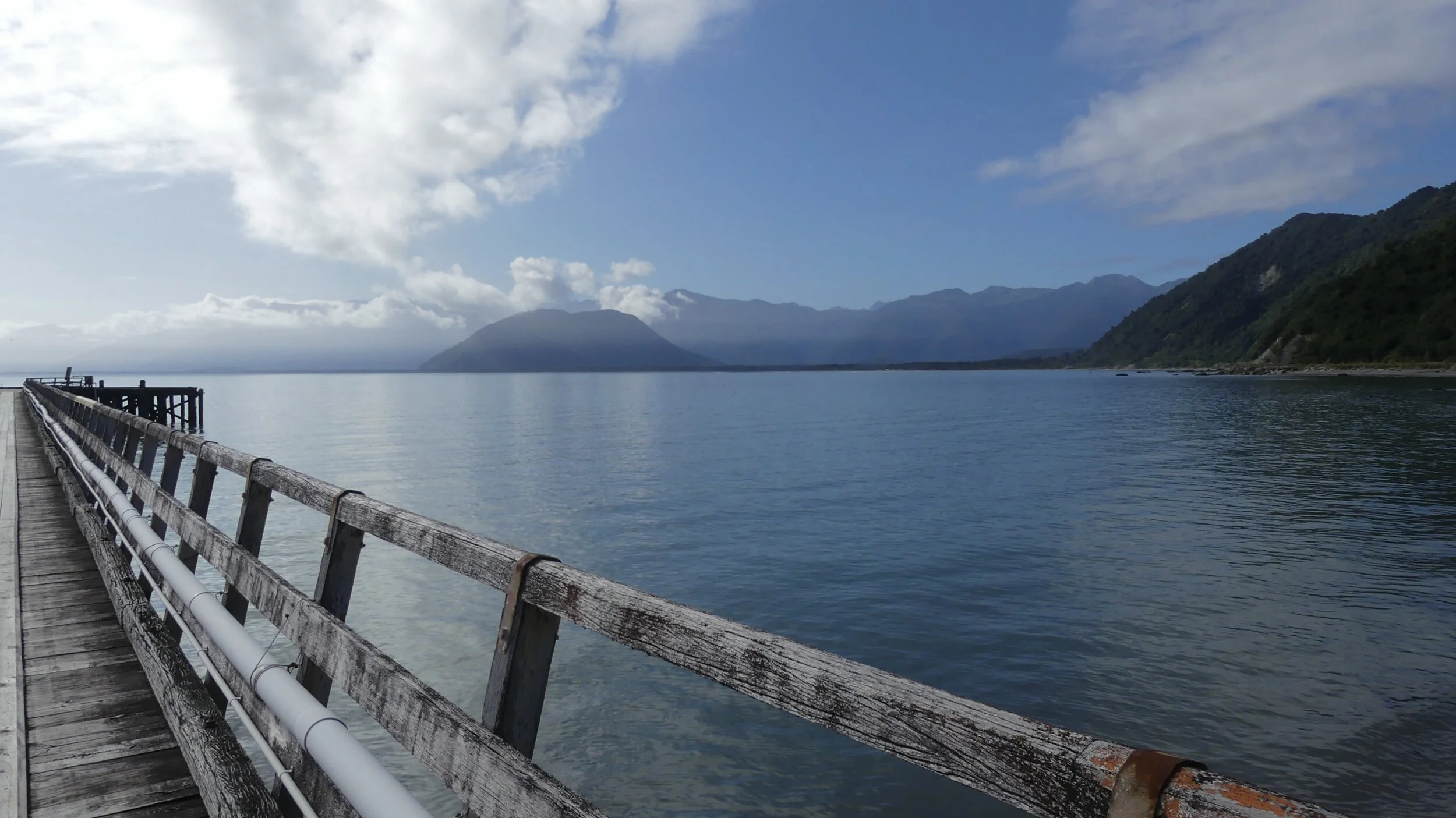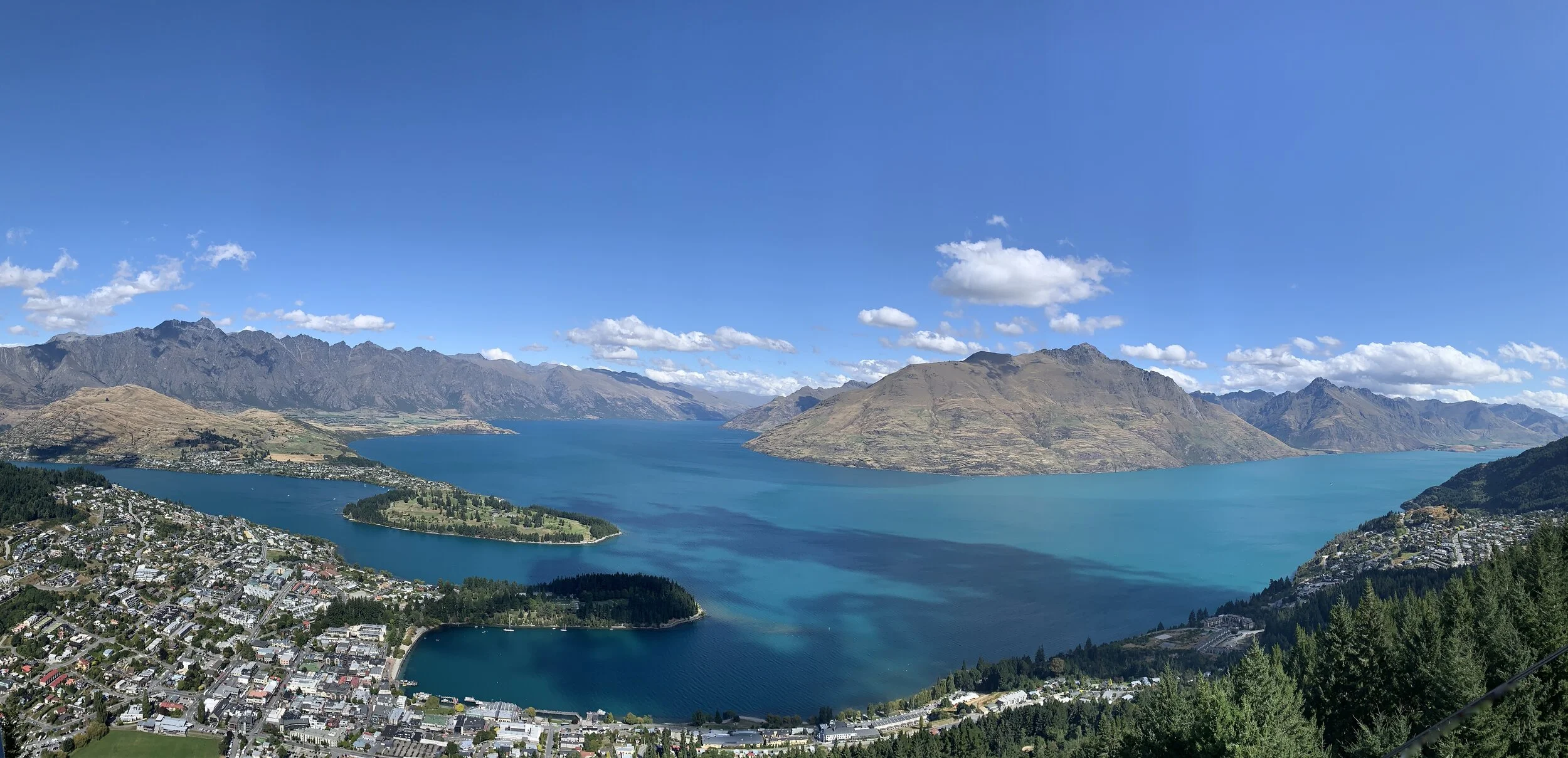Beyond the Gates of Haast
The addition of meltwater to another body of water creates a distinctive shade in its colour palette. On Day 12 of our South Island tour, I stopped north of Wānaka to admire the wonderful green-blue of the Hāwea River. The waters of Lake Hāwea were similarly intense. My diary that day records a landscape of ‘turquoise lakes and towering peaks’.
#NoFilter
Lake Hāwea
Looks more like a drawing than a photograph
Lake Wānaka and the Southern Alps
We crossed The Neck, a rocky ridge where two glaciers once met. It is now the narrowest point between two roughly parallel glacial lakes – Hāwea and Wānaka – formed from the melting glaciers. Flowing into the head of Lake Wānaka, the Makarora River was braided and its waters were the telltale pale turquoise. We began to climb over Haast Pass.
Makarora River
Haast Pass is 562 metres (1844 feet) above sea level at the saddle between the Makarora and Haast river valleys. It lies within Mount Aspiring National Park and forms the boundary between Otago and West Coast Regions. The Gates of Haast are listed as a New Zealand waterfall, but they are more accurately described as a series of rapids. The flow was fast but I suspect nowhere near as voluminous as in late winter and spring. There are short walks through rainforest to several waterfalls not far from this mountain road.
Māori walked this way long before European settlement in search of pounamu – greenstone or New Zealand jade. Pounamu is nephrite jade, one of two jade silicates, the other being jadeite: both are metamorphic in origin. We had already been on a search of our own in the rock shops of Queenstown and Arrowtown. My friend had learned it was unlikely he’d be able to get hold of any rock samples that hadn’t been cut and polished into gemstones. Pounamu has always been important in Māori culture for carving and trade. In 1997, ownership of all naturally occurring pounamu was handed back to the Ngāi Tahu people as part of their claims and settlement under the Treaty of Waitangi Act (1975).
Bridge through beech forest
There were serious mountains around us now (see also at the top of the page). The pale pink snow was courtesy of the Aussies: our bushfire smoke and ash had by now drifted more than 1500-2000 kilometres across the Ditch, as the Tasman Sea is affectionately known.
State Highway 6 – or the Haast Pass Highway at this point – takes a sharp right-angled left turn where the Landsborough River joins the Haast. By then we were barely half-an-hour from the coast.
The Haast region is so beautifully wild that UNESCO awarded it World Heritage Area status: its name is Te Wāhipounamu. At Haast Junction we left the highway, turning southwest. Our cabin was across the road from Haast Beach. It wasn’t pretty – being littered with timber debris, seaweed and small stones – but far-reaching and deserted.
Looking north along Haast Beach
Looking south
Looking inland
We walked along the beach with the sandflies towards a large tree trunk that had washed up. It was on the way back, I think, that my friend first began to notice small green stones. After a disappointing pub supper 4 km or so up the road, we were on the beach again in time for sunset. Many more sandflies were in attendance for the sunset-picture project.
I loved the muted colours of the back of the beach after sundown. And the texture of an ocean being rapidly drained of colour. To the north was a mist-covered mess; to the south, brooding silhouettes. It felt a bit surreal after Queenstown.
I’d been so busy looking through a lens, I hadn’t even spotted this.
We’d be headed further on down the road the following morning, to Jackson Bay.



